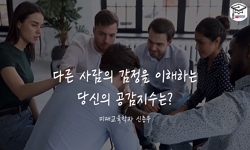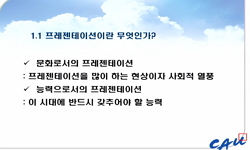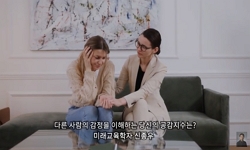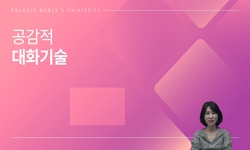14세기 흑사병이 서유럽에 상륙하면서 해당 병증을 드러내며 고통스러워하는 환자들의 모습이 동시대 미술에 등장하기 시작했으며, 특히 15세기 말에서 16세기 초에 다양한 작품이 제작되었...
http://chineseinput.net/에서 pinyin(병음)방식으로 중국어를 변환할 수 있습니다.
변환된 중국어를 복사하여 사용하시면 됩니다.
- 中文 을 입력하시려면 zhongwen을 입력하시고 space를누르시면됩니다.
- 北京 을 입력하시려면 beijing을 입력하시고 space를 누르시면 됩니다.

뜻밖의 위로: 서유럽의 흑사병과 14-16세기 신체적·심리적 고통의 시각화 = The Unexpected Consolation: The Bubonic Plague in Western Europe and the Visualization of Pain from the Fourteenth to the Sixteenth Century
한글로보기https://www.riss.kr/link?id=A108654275
- 저자
- 발행기관
- 학술지명
- 권호사항
-
발행연도
2023
-
작성언어
-
-
주제어
고통의 이미지 ; 공감 ; 문학치료 ; 위로 ; 정위 ; 카타르시스 ; 흑사병 ; bibliotherapy ; bubonic plague ; consolation ; images of pain ; orientation ; sympathy
-
KDC
600
-
등재정보
KCI등재
-
자료형태
학술저널
- 발행기관 URL
-
수록면
6-31(26쪽)
- DOI식별코드
- 제공처
-
0
상세조회 -
0
다운로드
부가정보
국문 초록 (Abstract)
14세기 흑사병이 서유럽에 상륙하면서 해당 병증을 드러내며 고통스러워하는 환자들의 모습이 동시대 미술에 등장하기 시작했으며, 특히 15세기 말에서 16세기 초에 다양한 작품이 제작되었다. 이러한 이미지들은 기존 연구에서 감염되었을 당시의 상태나 병증의 치료와 같은 대처 방식을 기록한 의학사적 사료로서만 관심을 받아 왔다. 최근 근세미술사학계에서 활발히 이루어지고 있는 ‘고통 받는 몸’에 대한 일반적 논의를 적용하면, 흑사병의 고통을 시각화한 작품들을 공포감 조성을 통한 윤리적 계도의 수단으로 해석할 여지가 있다. 당대인들이 전염병을 인간의 죄에 대한 신의 형벌로 이해했기 때문이다. 그러나 본 연구는 이 그림들이 감상자들에게 비판적 메시지보다는 위안을 전달하는 ‘뜻밖의 역할’을 수행했음을 고찰한다. 이 그림들은 감염된 자들에게는 자신들의 신체적, 정신적 고통을, 비감염자들에게는 자신들에게도 닥쳐올지 모를 고통에 대한 두려움을 가시화하는 역할을 했다. 이는 일레인 스캐리(Elaine Scarry)가 주장했던 것처럼 고통의 표현불가성으로 인한 외부와의 단절을 “대상화된 형태”로 변환하여 그 괴로움을 일부 경감하는 행위로 이해된다. 또한, 문학치료(bibliotherapy)의 핵심 치유 기제인 “너 혼자만이 겪는 고통이 아니다”라는 공감적 체험을 제공했던 것으로도 해석 가능하다. 아비 바르부르크(Aby Warburg)의 논의를 적용할 경우, 불가해한 고통과 공포를 승화시키고 카오스적인 세계 안에서 정위하려는 서유럽인들의 절박한 노력을 담은 일종의 파토스 형식으로 볼 수 있다. 이 연구는 14-16세기 흑사병 환자들의 고통을 재현한 작품들의 조형 언어와 문화사 및 종교사적 맥락이 실제로 이러한 현대이론의 틀과 서로 공명함을 보여준다. 그리고 이를 통하여 이 그림들이 인간의 고통과 치유에 대한 보편적 속성을 내포하고 있으며, 때문에 그 감상에 있어 ‘뜻밖’이지만 또한 친숙한 위로의 기제가 작동함을 밝힌다.
다국어 초록 (Multilingual Abstract)
After the outbreak of the Black Death, pictorial representations of the pain caused by the plague became increasingly popular, the zenith of which was between the late fifteenth and early sixteenth centuries. These images have attracted scholarly atte...
After the outbreak of the Black Death, pictorial representations of the pain caused by the plague became increasingly popular, the zenith of which was between the late fifteenth and early sixteenth centuries. These images have attracted scholarly attention mainly as historical records describing the symptoms of the disease and its medical treatments. The goal of the present study, however, is to demonstrate that they played an “unexpected” role in comforting contemporary viewers: for those who were already contaminated, the images gave shape to their current pain, while for the noninfected, they materialized the fear of possible infection and the following pain. Here, the images can be understood as “objectified pain” in Elaine Scarry’s term, allowing an otherwise inexpressible inner state to be communicated to the external world, and thereby offering emotional catharsis. In the images of pain, the viewers also discovered the fact that they were not alone in suffering ― a crucial mechanic of consolation particularly emphasized by modern practices of bibliotherapy. Lastly, adopting Aby Warburg’s ideas, these images are to be considered as a kind of Pathosformel embodying Europeans’ efforts in the age of the bubonic plague to sublimate the inexplicable crisis as well as to orient themselves in that chaotic world.
동일학술지(권/호) 다른 논문
-
포스트 코로나 시대, 경계적 주체성에 기반한 예술작품 연구: 분열적 다중성 및 멀티 페르소나 개념을 중심으로
- 한국미학예술학회
- 유원준 ( Won-joon Yoo )
- 2023
- KCI등재
-
현대미술의 병원(病原)적 매체: 장-뤽 낭시 그리고 포스트 코로나 공동체
- 한국미학예술학회
- 최종철 ( Jong-chul Choi )
- 2023
- KCI등재
-
매클루언과 매체기원의 문제: 원시언어, 미메시스, 메타포를 중심으로
- 한국미학예술학회
- 백용성 ( Yong-sung Paik )
- 2023
- KCI등재
-
- 한국미학예술학회
- 정락길 ( Lak-kil Chung )
- 2023
- KCI등재




 KISS
KISS






